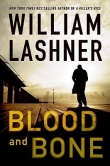
Текст книги "Swains Lock"
Автор книги: Edward A. Stabler
Жанры:
Триллеры
,сообщить о нарушении
Текущая страница: 20 (всего у книги 25 страниц)
Chapter 31
Archives
Friday, August 30, 1996
On Friday morning Vin was working on his last consulting task of the week: developing a suggestion-rating feature for Rottweiler’s website. As he considered the user interface, he realized the requirements weren’t fully specified. Could anyone post a rating? If not, what sort of credentials were needed? While e-mailing a series of questions to his project manager, he felt a combination of disappointment and liberation. It was how he’d felt in grade school when a Friday of exams was canceled because the furnace broke. You knew you’d have to take the exams later, but for now you had the rest of the day and the weekend off.
After sending his message, he uploaded his project to the Rottweiler server. Through no fault of his own, he reminded himself, there was no more work worth doing today – and it wasn’t even ten yet. He climbed the stairs, poured what was left of the breakfast coffee, and leaned into the living-room couch with Vieira’s book.
Instead of continuing with the chapter about Cumberland, he returned to the Edwards Ferry page that referenced Emmert Reed. Something about the words penciled in the margin had been nagging him. The arrow implied that the phrase “and his albino mule?” should be inserted between the words “Emmert ‘M-Street’ Reed” and “tended lock 25”. The phrase was posed as a question and the question gnawed at him now. Why would a locktender have an albino mule? Or any mule? Along the canal, mules were primarily used to pull boats.
In his note to Charlie Pennyfield, Lee Fisher had said the place was “well knowed by Emmert Reed’s albino mule.” Lee was a young man when he wrote the message, and young men didn’t generally tend locks. They worked on canal boats. So if Lee was a boater, he would have passed through Edwards Ferry twice on each circuit between Cumberland and Georgetown. He would have had many opportunities to meet Emmert Reed and his memorable mule.
But Lee’s note implied that Charlie would also know Emmert Reed and his mule, and Charlie stayed put at Pennyfield Lock throughout the boating season… while Emmert was ensconced twelve miles upstream at Edwards Ferry. So when would Charlie encounter Emmert and his mule?
Vieira mentioned that Emmert sold smoked pork and turtle meat to passing boaters. But Vieira also wrote: “Reed’s nickname reportedly derived from his affinity as a younger man for the Georgetown taverns at the terminus of the canal.” As a younger man… M-Street Reed frequenting the saloons in Georgetown. From reading the Hahn and Kytle books last fall, Vin already knew who else visited those saloons: boaters, at the end of their runs to Cumberland and Georgetown, while waiting for their boats to be loaded or unloaded by the Canal Company.
Now it made more sense. The books had mentioned that many locktenders were former boatmen. Maybe, before he’d taken over Lock 25 at Edwards Ferry, Emmert “M-Street” Reed had captained a canal boat. If Reed had boated as a younger man, his albino mule would be known by locktenders and other boatmen. How many albino mules could there be along the canal? Maybe Lee Fisher started boating as a young boy, when Reed’s albino mule was still plying the towpath. Charlie Pennyfield would have seen the mule as well, unlike someone with less experience on the canal. So perhaps Lee was trying to make sure his message could only be understood by a canal veteran like Charlie.
Hopeful that he had unraveled a portion of the knot, Vin felt a flush of accomplishment. But his optimism deflated as he considered the ramifications of his reasoning. If Reed ran a canal boat with a team that included an albino mule, the entire canal would be “well knowed” by the mule! Lee’s message said the joined sycamores were at the edge of a clearing. But that clearing could be anywhere. The canal was 184 miles long!
Wait, he reminded himself. Think through it. Lee’s note said he might be buried along with the others “because of what happened today at Swains Lock.” So the truth was probably no more than a day’s walk away. Swains was at mile 16.7, Georgetown at mile 0, and Edwards Ferry at mile 31. That was the most promising terrain for his search.
Back to Emmert Reed. If I consider him a boatman rather than a locktender, what does that mean? Most boat captains came from the upper regions of the canal – Cumberland, Hancock, Williamsport, Sharpsburg. A few came from nearer towns, like Brunswick or Frederick. So even if Reed ended up tending lock at Edwards Ferry, it wasn’t surprising that Thomas F. Reed in nearby Poolesville told Vin that he had never heard of him. There weren’t that many locks, and old M-Street probably took the first locktending position he was offered. At least Edwards Ferry wasn’t in the middle of nowhere, as some locks were.
If Vin could find out where M-Street was from, maybe he could find a relative who still lived there. Of the books he’d reviewed, only Vieira’s book even mentioned Reed. But there must be some kind of surviving records from the Canal Company. Vin knew that during the last decades of the C&O, the Company owned all the boats and all the coal they carried. The boat captains might own their own mules and some of the boat rigging, but they were essentially hired hands. So maybe there were some employment records gathering dust somewhere that he could review. Something that would tell him where Reed lived during his boating days, or provide some other insight. Something that could steer him toward a particular place.
He set Vieira’s book on the table and headed for the entryway, plucking his car keys from the ceramic bowl on the table. He couldn’t remember the author’s name but was sure he’d recognize the book when he saw it again. He passed his desk and monitor without a glance and left through the door to the garage. Five minutes later he pulled into the Potomac Library lot.
The book was by Walter S. Sanderlin. The Great National Project: A History of the Chesapeake and Ohio Canal. Published in 1946. The other books Vin had found were authored by well-read canal enthusiasts and included insights from interviews and personal observations. But Sanderlin had taught history at the University of Maryland. His book preceded the others by a generation and read like a dissertation. And its bibliography was meticulous. Vin found the lead he’d hoped for on page 298.
The most important sources for the entire history of the canal and its predecessors are the private records of the canal company and the Potomac Company… With a few exceptions the records are complete, and are deposited in the Department of Interior Archives of the National Archives.
He checked the Sanderlin book out and drove home. The National Archives were in D.C., somewhere down on the mall, right? Along with all the museums? He and Nicky had spent a Sunday morning on the mall a few weeks after they moved to Potomac. Everything was free, so they’d popped in and out of the American Museum of Natural History, both wings of the National Gallery, the Air and Space Museum, the Hirshhorn… They had a tourist’s map of the mall somewhere. He found it tucked into the living room bookcase. The National Archives building was near the center of the map, facing the mall from the north side of Constitution Avenue. The clock in the kitchen read ten minutes to noon. He slipped the map into the Sanderlin book and headed back out to the car.
***
The clerk at the research counter in Room 203 at the National Archives asked for Vin’s last name, examined his temporary ID badge, and turned to a row of wheeled carts behind the counter. The carts held gray document boxes, each of which was tagged with a copy of the document-pull slip, held on by rubber bands. The clerk selected two boxes and brought them back to the counter. After reviewing the indices in the Finding Aids Room, Vin had submitted his request to the Archives staffer less than an hour ago, and now his documents had been pulled and boxed. He signed the check-out sheet and carried the boxes to an empty desk.
From his desk he surveyed the room. The walls were gray brick masonry and a row of oversized windows looked out past Pennsylvania Avenue toward the columned façade of the National Portrait Gallery. Rustic wagon-wheel chandeliers hung from the high coffered ceiling, which had recessed wooden panels painted in a geometric pattern of warm colors.
He opened the hinged top of the first box to find a ledger bound in black leather, its title embossed in gold on the spine: Reports of the Trustees of the Chesapeake and Ohio Canal Company. Dates were written in longhand on its title page: March 3, 1890 – December 31, 1904. He leafed through sturdy pages covered in elegant script. Most of the entries were minutes of the meetings of the trustees for the Canal Company, who were appointed when the company went into receivership after the catastrophic flood of 1889 suspended canal operations for over a year. There were summaries of reports provided by various engineers on the cost of restoring different portions of the canal and reports on the status of petitions by assorted canal creditors. He closed the ledger and laid it aside.
From the second gray box came two more ledgers: The Chesapeake and Ohio Transportation Company and Canal Towage Company, Minutes of the Board of Overseers. The first one was dated January 30, 1894. It contained a company charter and a series of agreements between the trustees of the bankrupt Canal Company and the newly-established Transportation Company, a wholly-owned subsidiary of the B&O Railroad. Vin remembered reading that when the Canal Company went into receivership, the B&O Railroad had been its largest bondholder. The B&O was determined that the canal and its rights of way not be sold to its competitor, the Western Maryland Railway Company. So the B&O created the Transportation Company, which paid the Canal Company to maintain the canal for commercial use. In exchange for the token profit guaranteed by these payments, the Canal Company trustees agreed not to sell the canal.
The meeting minutes in the ledger for the Canal Towage Company were more interesting, since they provided data on the operations of the canal during its last two decades. The purpose of the Canal Towage Company was to standardize and streamline the process of shipping coal down the canal. Because it was created in 1902 by agreement between the Consolidation Coal Company and the canal trustees, the Canal Towage Company was also under the aegis of the B&O Railroad. Consolidation Coal was a B&O subsidiary that owned and operated coal mines in western Maryland. Coal was transported from the mines to the head of the canal in Cumberland via another B&O subsidiary, the Cumberland and Pennsylvania Railroad. So from its resurrection after the 1899 flood until its demise in 1924, the C&O Canal served as little more than a link in the distribution chain that delivered B&O-owned coal to Washington, D.C.
Vin skimmed the issues discussed in the minutes, looking for lists and tables. He found them in the appendices. Financial statements for the years 1902 through 1922. Statements documenting the coal tonnage carried and the tolls paid each year. Annual statements of spending for the construction and repair of canal boats, listed by boat number. And the pages he’d been hoping to find – the annual fleet rosters from 1903 through 1922, listing the captains operating on the canal and the boats to which they had been assigned.
The rosters were ordered by boat number, and Vin skimmed quickly through the list of boats and captains for the 1903 season without finding the name he was looking for. He turned to the roster for 1904 and found the following entry partway down the page:
32 Emmert Reed Harpers Ferry Road, Sharpsburg, Maryland
Flipping through the subsequent rosters confirmed that Reed had captained boat 32 from 1904 through 1912. Each entry listed the same address; Vin penciled it down along with the boat number on the provided scrap paper. He paged through the rest of the appendices, closed the ledger, and slipped it back into its document box. After returning the boxes and signing out of the room, he walked downstairs to the lobby, returned his badge, and signed out of the building.
His visit to the National Archives had required stepping through a gauntlet of checkpoints but taken less than two hours from start to finish. And look what was offered! A chance to sift at his own pace through original documents that were well-preserved and a hundred years old. It was a benefit of moving to the D.C. area that he’d never considered before.
Since it was the Friday before Labor Day, traffic was lighter than usual and he made it home by four. He went straight to his desk, where he dialed into the network at Rottweiler’s Boston office. He browsed to a white-pages website, entered “Reed” as the surname and “Sharpsburg, MD” as the city, and clicked the Search button. Four listings appeared: Cameron, E J, Elizabeth, and Martin. None of the addresses were on Harpers Ferry Road. He printed the page and disconnected the call, then dialed all four numbers.
Cameron sounded like a young guy, maybe in his early twenties. Vin didn’t leave a message. The number for E J was answered by a “no longer in service” recording, which left him wondering how current the listings were as he crossed off E J’s entry. His call to Elizabeth went unanswered. That doesn’t happen very often anymore, he thought. Maybe an elderly person? Martin’s phone was picked up by a teenage girl. Without much conviction, he repeated the query he’d used previously, that he was a researcher interested in a canal-era locktender named Emmert Reed. Would she or anyone in her family know that name?
“I haven’t heard of him. You’ll have to ask my Dad.” She went on to mention that her Dad was away on business but would be back in ten days. Vin wrote “call 9/10” next to Martin’s name.
That was a quick exercise in futility, he thought. He skimmed the list again – it wasn’t useless yet. He hadn’t trusted Cameron to return his call, but a few more attempts to catch him might be worthwhile. And maybe Elizabeth was one of those people who hate answering machines and he’d called while she was out. Even Martin was worth another try, though it was hard to imagine waiting ten days to do it.
He sensed a presence behind him and swiveled in his chair. Randy was squatting nearby, watching him hopefully while wagging his tail on the rug. It was time for a run on the towpath.
Chapter 32
One Red Leaf
Saturday, August 31, 1996
Leaning forward in her patio chair, Kelsey pressed the shedding blade against the base of Allie’s neck and stroked back along her flank. When the blade reached the dog’s hindquarters, she shook loose a clot of hair that fell into a paper bag between her feet. Allie stood still with half-closed eyes and the trace of a smile, panting lightly in the early-morning air.
“You’d be happy if we did this all day, wouldn’t you?” The dog eyed Kelsey and closed its mouth to swallow, then resumed panting as the blade traversed its left side and chest. The early morning sun was already warming the air, so Kelsey unbuttoned her lavender sweater and draped it over the back of her chair. She looked down at the growing haystack in the paper bag.
“Maybe next year we’ll just shave you on Memorial Day and be done for the summer.” She tugged the dog’s collar to turn her around and began stroking Allie’s right side. When the yield of hair tapered off, she slapped the dog lightly on the breast and laid the blade on the patio table. Allie slumped down on shaded flagstones as Kelsey sipped her cooling coffee and leaned back in her chair.
In the sweetgum tree past the edge of the flagstones, a single bright red leaf near the center stood out against the litter of green stars. It’s a harbinger, she thought, of events that are now close at hand. Looking up she saw blue sky, with traces of cirrus to the southwest. It’s funny that my sense of anticipation is heightened now, when a generation ago I was oblivious. Maybe now, all these years later, the truth will rise to the surface and become clear. As it had become clear to her subconscious already. A light breeze stirred the sweetgum’s leaves and chilled her arms and shoulders. And the money? That might be compensation for the long, long wait. She crossed the patio toward the glass doors. It was time for her vigil to start.
Chapter 33
Reeds
Tuesday, September 3, 1996
Vin paged through the Washington Post in the breakfast nook as he finished his coffee. Labor Day weekend was over and Nicky had left for the Clinic early, anticipating a long day. To his surprise, Rottweiler had thrown the ball back into his court over the weekend by sending him the specifications he needed for the suggestion-rating feature. He sighed, unenthused by the prospect of getting back to work. This feeling – that what he produced was trivial and dull – was what had made him want to quit his job in the first place.
He reached for the front-page section, which he usually saved for last, and read an article about two hurricanes that the media had been covering for the last week.
A few days ago Hurricane Edouard seemed destined to deliver a jarring punch to southern New England, but benevolent forces prevailed and the hurricane swung back over open waters during the weekend. Now 195 miles southwest of Halifax, Nova Scotia, Edouard has been downgraded to a tropical storm. While Edouard left buildings and infrastructure intact, its slashing rain immobilized thousands of coastal residents and visitors in traffic gridlock as they attempted to evacuate Cape Cod and the island communities ahead of the storm.
With Edouard receding, Atlantic seaboard residents are turning their attention to Hurricane Fran, whose 80-mile-per-hour winds were gaining strength as Fran passed 495 miles east of the Bahamas, en route toward a possible landfall later this week in the Carolinas.
Vin wondered whether his friends in West Falmouth were among those who had fled Edouard to idle in traffic on the arteries that connected Cape Cod to mainland Massachusetts. And for no reason, as it turned out – a waste of a long weekend at the beach. The wind and rain dispersed the crowds and made sailing small boats or windsurfers on Buzzards Bay a thrill.
He folded the paper – there was no postponing work any longer – and went downstairs to his office, where he examined the array of pages on his desk. Lying askew to his binders and notes was an orphaned page near the phone… a screen-print from the white-pages website he’d consulted after his trip to the Archives. With the listings for Cameron, E J, Elizabeth, and Martin Reed in Sharpsburg. He’d already crossed out E J’s listing, and for Martin written “call 9/10.”
He tapped out Elizabeth’s number and hit the dial button. The annoying buzz of a busy signal blared from the speaker. No voice-mail and no roll-over, he thought. At least she’s consistent. He dialed Cameron and got voice-mail again. While listening to the greeting he composed a message, but hung up instead at the beep.
What is wrong with me? he asked himself. Why am I worried that a message about Emmert Reed will sound idiotic? Or maybe quixotic is the word. Is it because I believe that myself? Why can’t I stay focused on my work? It’s a legitimate project for decent pay. Just like the job I walked away from in Boston. I could get back on a career path here… maybe at one of the Beltway-bandit firms. God knows there are enough of them around. Obviously that’s what Nicky wants. He sighed and dialed Elizabeth’s number again. This time he heard ringing, followed by a live voice at the end of the line.
“Hello?” The word was extended into three bright syllables. She responded to his inquiry by telling him her name was Betsy. Her voice was warm and brittle and he guessed that she was in her sixties, maybe seventies. He launched into his script: he was researching an article for the Maryland Historical Society about the C&O Canal and looking for information about Emmert Reed, who had tended lock and captained a canal boat in the 1910s and 20s.
“That’s a name I haven’t heard for a long time,” she said, and Vin thought he heard a note of wistfulness.
“Emmert Reed?”
“He was my husband’s grandfather,” she said, a warm tone returning to her voice.
“Do you suppose your husband might be able to help me find…”
“My husband passed on three years ago,” Betsy interrupted gently.
“I’m very sorry.”
“Yes.” She paused long enough that he wondered how to break the silence. Betsy did it for him. “Dan always loved to pass along the stories he heard from his grandfather. To our children, when they were young. About the boating life. He would always tell them that it was a hard life back then, but a good and simple life. And everyone knew you only got what you worked for. Dan used to worry sometimes that young people don’t see things that way.”
Vin made small sounds of affirmation to let her know he was listening.
“Of course, I think our children turned out alright,” Betsy said, “but now I wonder if they’re raising their children the same way!” She chuckled, and Vin could picture an elderly woman smiling and shaking her gray curls in bemused admonishment. He tried to steer the conversation back toward Emmert Reed.
“Did your husband know his grandfather well?”
“Oh yes,” Betsy said. “I mean, he did as a boy. Old Grandpa Em – that’s what Dan called him when he talked to our children – was still alive back then, living here in town. I think Jake and Ida used to take Dan and Sarah over to see their grandparents quite often. Of course, Emmert died many years ago. Sometime around 1950, I think. And then Dan would drop by to check on his grandma Helen as she got on.”
Vin cupped a hand over the receiver and cleared his throat as he thought about how to phrase the next question. “I’d love to hear some of your husband’s stories about his grandfather. Did he… write any of them down?”
Betsy laughed. “Oh no. Dan wasn’t the type to do that. He could write a letter now and then when he had to, but that wasn’t something he enjoyed doing very much.”
“I see. Did your husband’s grandfather ever…”
“He did like to take pictures, though.” Vin didn’t mind the interruption, since the question he had been about to pose, whether Emmert Reed had bequeathed a journal to his grandson, seemed ludicrous even to him.
“…and collect them in photo albums,” she said, finishing her thought. “And so did his father, though Jake mostly just kept them loose in an old box.”
“Hmmm, that’s interesting,” Vin said softly, encouraging her. Betsy sailed on.
“But Dan took all those old pictures and put them into an album for his father. That was a few years before Jake died. Jake died in 1971.”
A young girl’s voice pealed brightly from the far side of the line, “Grammy we’re waiting.”
“I’m sorry,” Betsy said. “My daughter is visiting with my grandchildren, and I guess I’m holding up the show.” Vin heard fumbling at the other end of the line as her voice grew distant for a second. Then she was back, and he sensed an opportunity that would vanish in an instant.
“I’d very much like to stop by and meet you, Betsy…if that’s OK with you. We could talk some more about your husband and his grandfather. If we looked at your husband’s photos, you might have a recollection or two that would help my research.”
“Oh, I think I might enjoy that. But it would be easier for me to do it after Alison and the girls go home. They leave on Thursday morning.” Vin happily agreed to visit her house Thursday afternoon and confirmed her address in Sharpsburg.
“I never really find a reason to take those albums off the shelf anymore,” Betsy said. “Who knows? There might even be a picture of old Grandpa Em in there.”








